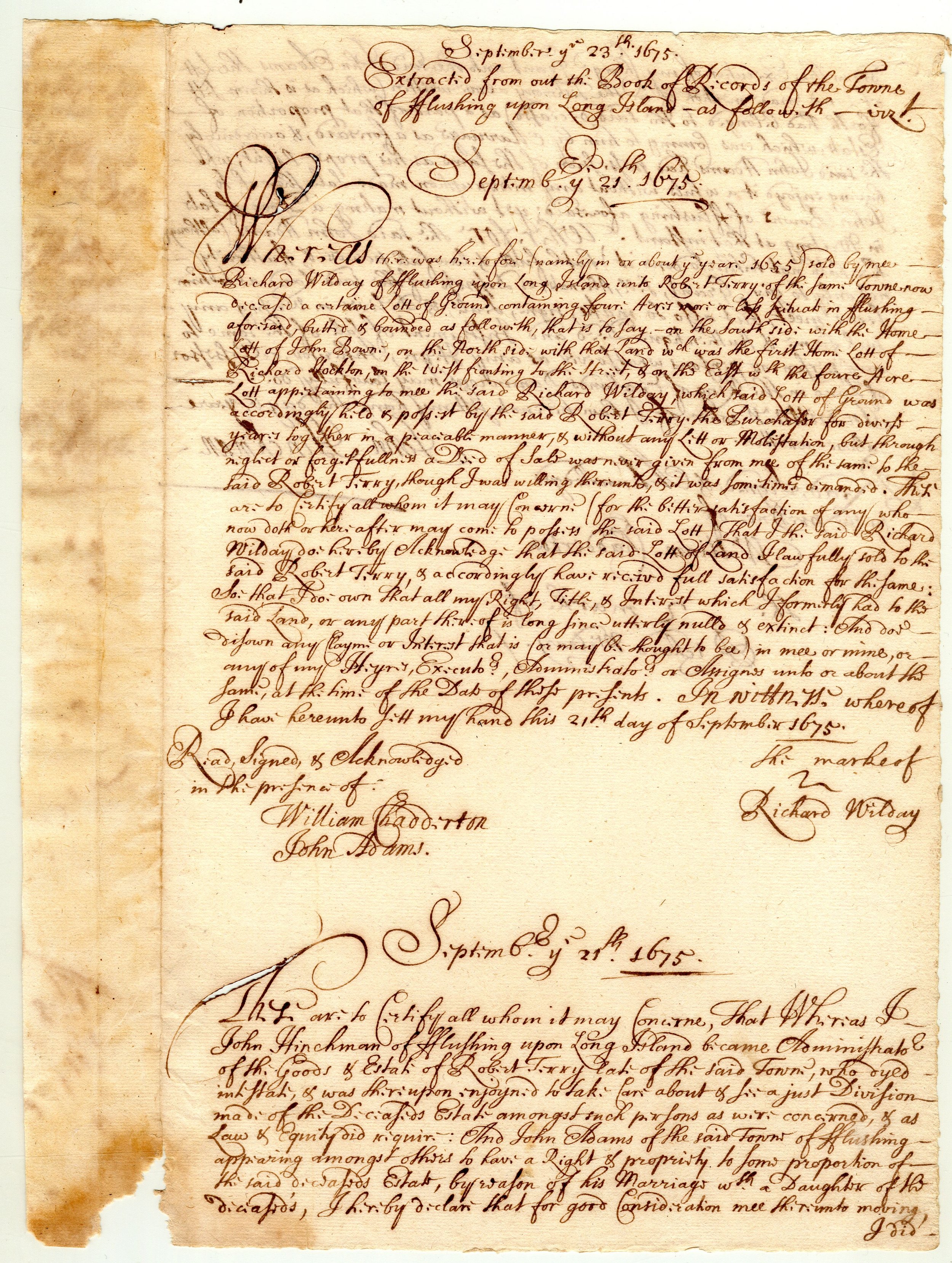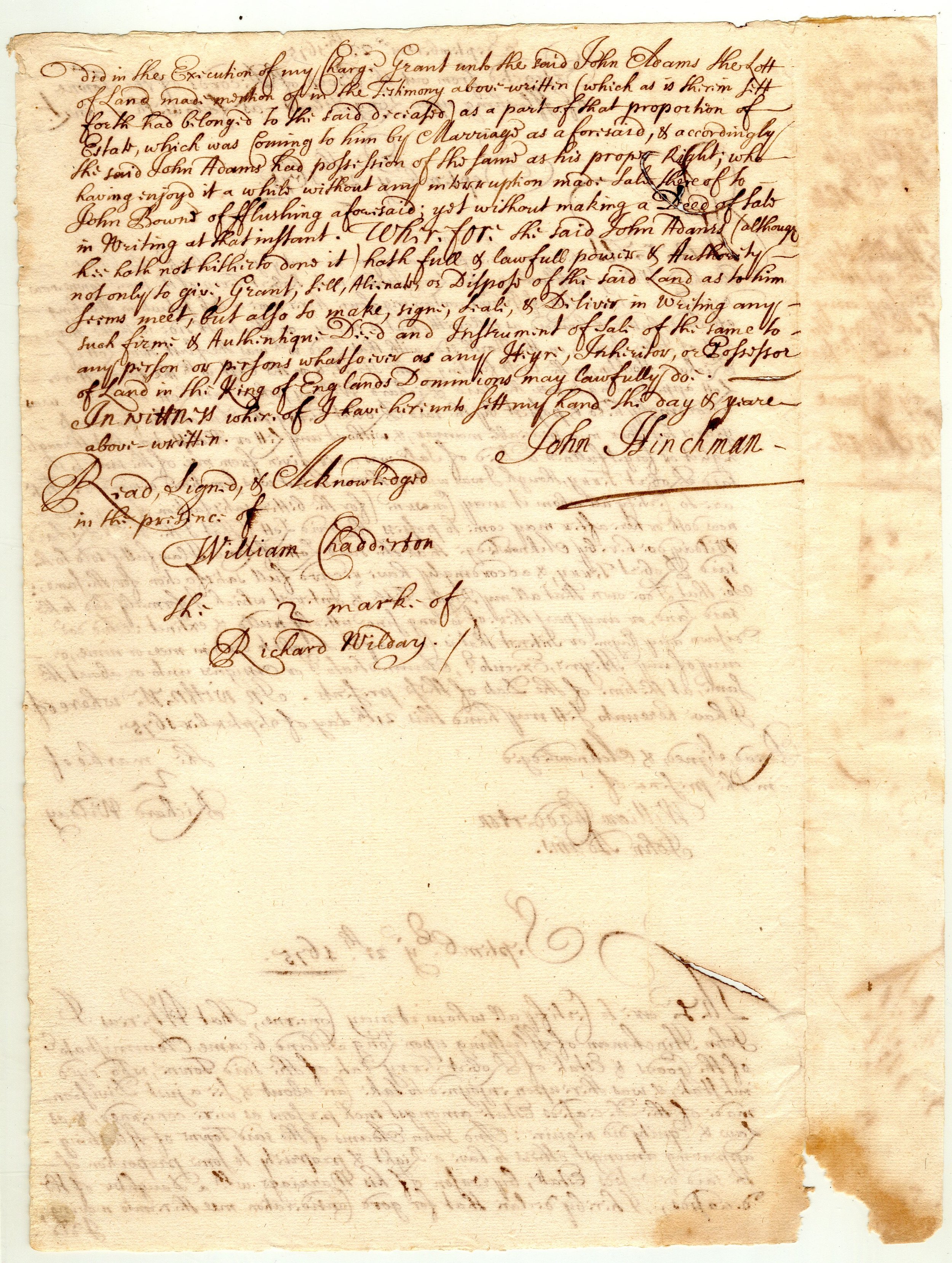TITLE: Will of Thomas Bowne
DOCUMENT ID: BFP 2018.1.01-01
DATE: 20 October 1675 (Old Style) / 30 October 1675 (New Style)
Thomas Bowne leaves all his estate “of any kind whatsoever, real or personal, here in this country or in Old England” to his son and heir John Bowne, excepting only a cow to his granddaughter Mary Bowne and 10 pounds to his daughter Truth, provided she travel to America to claim it in person. Thomas also names John as the executor of his will. In fact, Thomas Bowne died while John Bowne was traveling abroad, and there is no evidence that this will was ever proved. It was supplemented a year later by a deed of gift that exclusively referred to family holdings in their Matlock, Derbyshire.




















